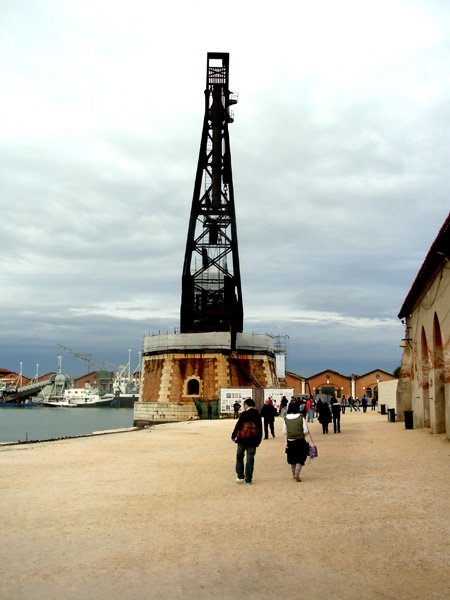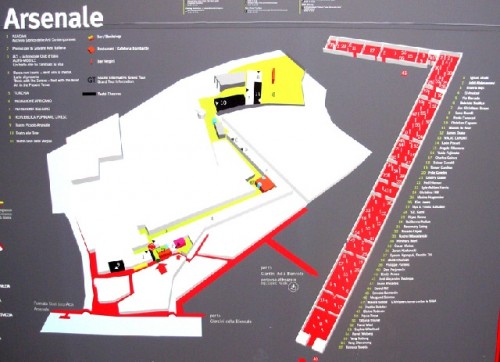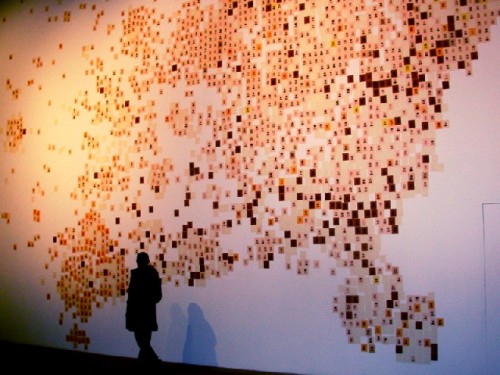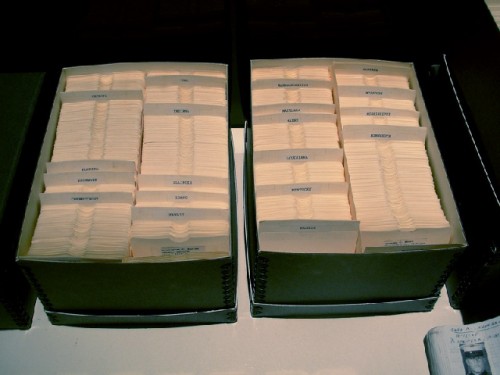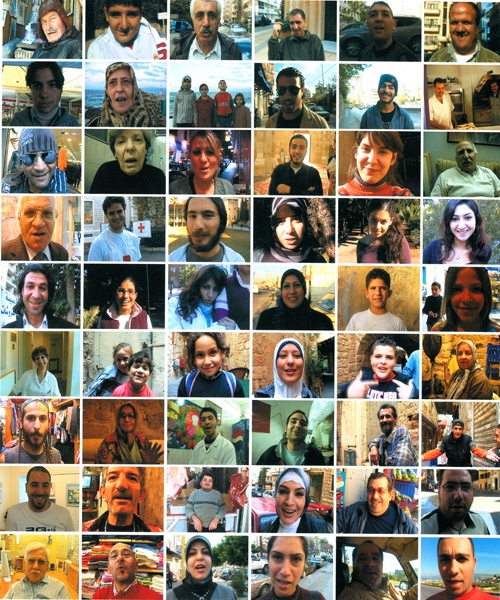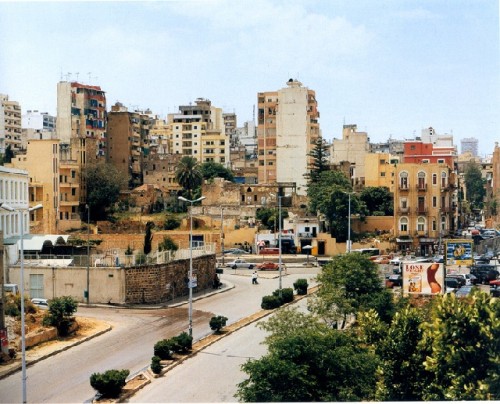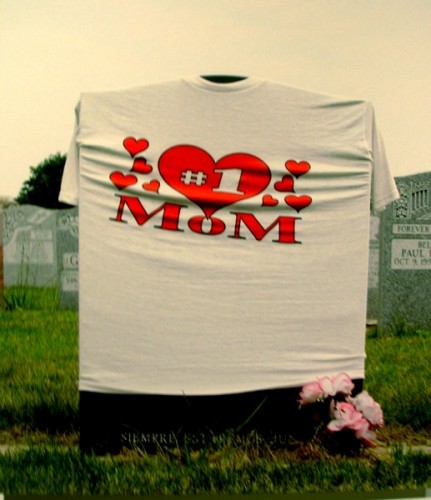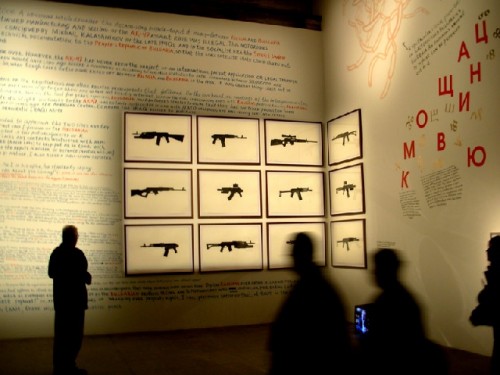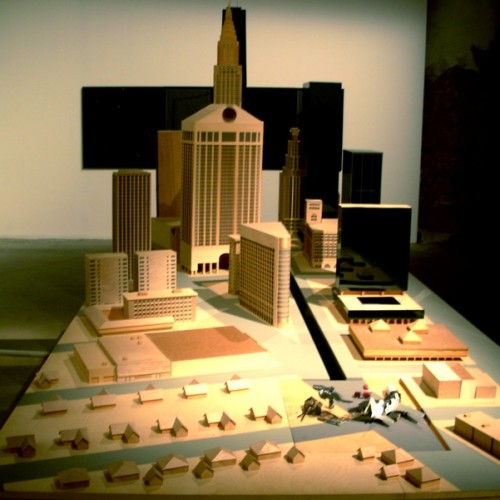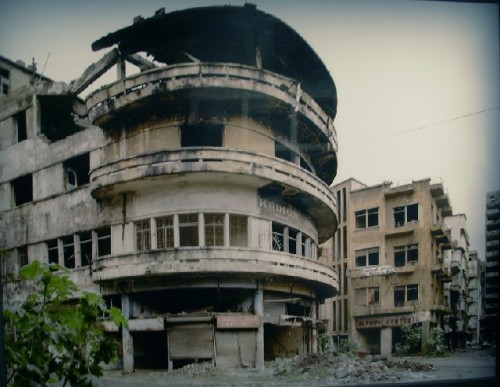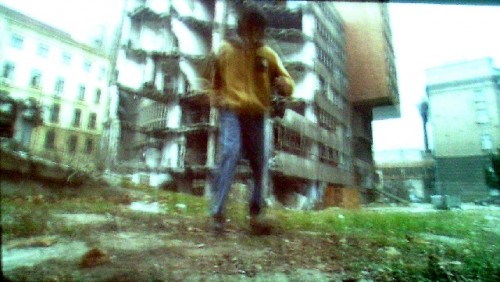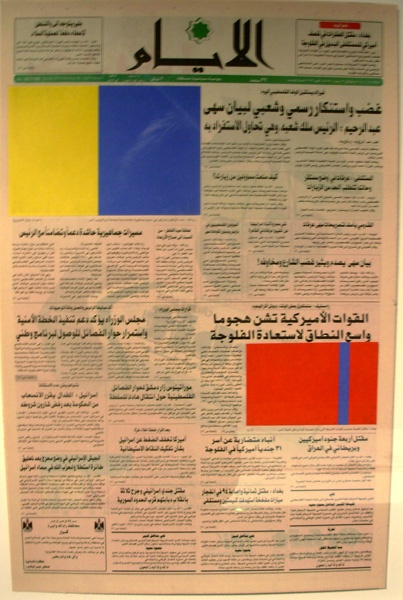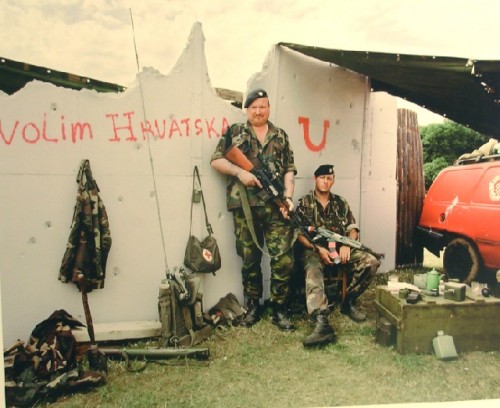Venice Biennale 2007: The Arsenale
Death in Venice
By: Charles Giuliano - Nov 28, 2007
While the installation in the Italia Pavilion in the Giardino of the Venice Biennale, curated by Robert Storr, proved to be bland, mainstream and predictable, the opposite was true while viewing the great range of work at the Arsenale. This vast space in what was formerly a Navy base and shipyard has an interesting array of formerly industrial buildings. Compared to past installations of the Aperto which ended in 1993, a survey of emerging artists and a sidebar to the main exhibitions in the Giardino, the concept this time was to extend the theme of "Think With the Senses Feel With the Mind." Compared to the clutter of former Biennales many observers noted that the current division of individual displays in the Arsenale was so orderly that one critic compared it to the cubicles in a refrigerator's ice tray. This was conveyed with a note of lament for the former onslaught of visual information.
If there was a prevailing aura of power and elitism in the Giardino the feeling in the Arsenale was that artists all over the world are dealing with social and political issues including mortality, the ravages of terrorism, wars, and ethnic cleansing. One does not get that sense of human conflict by contemplating the cool abstractions of Ellsworth Kelly or Robert Ryman in the Giardino.
Experiencing the Arsenale's range of fixation on gloom and doom was hardly a picnic in the park. There were many tough issues to grapple with. But much of the work was presented with irony and even some humor. Toward the end of the building, for example, there was a corridor lined with large video monitors by the Chinese artist, Yang Zhenshong, in which a range of individuals, randomly encountered on the streets of Tokyo, Beirut and Rome say in English "I will die." There is no denying that and it is fascinating to view how each individual approached such a daunting fact. The range of responses was absorbing, inventive and insightful.
By photographing odd personal touches in cemeteries Jan Christiaan Braun has us laughing at death. In one image a T-shirt with the text "#1 Mom" and some hearts indicating love is stretched over a tombstone. In another example a grave has been decorated in a rather pop manner for Father's Day.
There is the tough, documentary approach of Gabriele Basilico, an Italian artist, who has photographed bombed out buildings in Beirut. The images of urban destruction have a melancholy beauty like the engravings of ruins by Piranesi. The Japanese artist, Tomoko Yoneda, has traveled to record the locations of former wars. The current images are rather benign looking landscapes until the captions reveal that these were formerly mine fields, and locations for snipers in South Korea, Serbia and Lebanon. Pavel Wolberg, who was born in the USSR and now lives in Tel Aviv, photographs the demonstrations and strife between Israelis and Palestinians.
In one of the most compelling projects in the Arsenale Emily Prince is making a small drawing of every American soldier who is killed in Iraq and Afghanistan. She archives the information in shoe boxes with index cards dividing the states. There are also note books with pasted down images of the fallen and some lines of information about them. In Venice the many small drawings were displayed in a large U.S. map outline and this allowed us to view the concentration of losses in particular geographic regions. Unfortunately, this is an open ended work of art with no end in sight. Like Maya Lin's Vietnam Memorial, with its ominous rows of some 58,000 inscribed names, this is yet another strategy to quantify and make visual the extent and impact of these terrible losses. It was heart breaking to view this work which brought home the honor of all of those individual American soldiers, now more than 3,000, and their sacrifices.
The Jordanian born artist, Emily Jacir, who lives and works in New York, has focused on the assassination of the distinguished Palestinian scholar and poet, Wael Zuaiter, in Rome on October 16, 1972. He was targeted by the Israeli's for his alleged part in the murder of Jewish athletes in the Munich Olympics. The hit on Zuaiter, in which he was shot twelve time by two Israeli assassins, is documented in the Steven Spielberg film "Munich." Here we see the documents related to that event including a copy of the "Thousand and One Nights" with a bullet hole. He was in the process of translating it from Arabic into Italian and the book was on his person when he was gunned down. For the many who have seen the film this makes us think of the other side of the conflict. The most disturbing point is that in an instance such as this the matter of right and wrong is our individual decision. But Jacir's project also stretches the limits of just how we define a work of art when there is such emphasis on documents. This is another example of activist information as aesthetic.
Taking a week's worth of Palestinian newspapers Marine Hugonnier cut out the illustrations from a book on Ellsworth Kelly and pasted them into areas which had contained photographs. While the text of the papers printed in Arabic conveyed stories of war and conflict the images with their bright geometric colors and patterns created a compelling contrast. Just how did that cool abstraction conflate with hot text and hard news. There is a conundrum for those who do not read Arabic and find it difficult to understand Kelly's reductive art. Without an understanding of the content, journalistic and visual, there is a tendency of contemplating the collages as decorative. The subversive strategy of the artist is that the work invites layers of understanding depending upon our commitment to unlocking its secrets. It was also intriguing that the work of Ellsworth Kelly, as an icon of modernism, was appropriated from the formalist Storr installation in the Giardino and resurfaced as a part of the political agenda of the Arsenale.
There is something about a uniform. Like many of my generation who grew up during and immediately after World War Two it was great to play soldier. The photographs of the British artist, Neil Harmon, document adults who dress up and act out war games. Perhaps it is more fun when the bombs and bullets aren't flying. He puts his thumb on the spooky notions of war as play and let's pretend. Since there are real wars going on this agenda of recreating military history becomes all the more strange and creepy.
The piece "Airplanecrashclock" by the American artist, Charles Gaines, initially seemed inspired by the events of 9/11 and as such, was rather offensive. In a model of details of the city of New York and its skyscrapers a long stick slowly emerges with a model airplane attached to its end. We observe it rising into the sky above the city and then crashing. But we were astonished to learn that the piece was created in 1997. Well before the attacks on the World Trade Center in 2001. If hindsight is 20/20 this is surely an amazingly prophetic work of art. How did Gaines anticipate so clearly what Americans would later experience?
The Argentinean artist, Leon Ferrari, has updated the traditional theme of the crucifixion. For Venice he mounted Christ onto an American jet armed with bombs. Perhaps the imagery in this case was a bit too obvious and strident. Particularly the conflation of the sacrifice of Jesus and a vehicle of military destruction.
The large screened video of the Italian artist, Paolo Canevari, was simple and compelling. In a grainy shot of a boy playing in front of the bombed out former headquarters of the Serbian Military in Belgrade we think he is practicing with a soccer ball. Upon prolonged observation we discover that the "ball" is in fact a skull. So the boy is literally playing with death. There is a similar second take when we observe a minimalist circle of thin metal by the Algerian, Adel Abdessemed, who lives and works in Paris. Closer observation reveals that the benign, seemingly minimalist/ formalist loop is made of razor wire.
The Bulgarian artist, Nedko Solakov, created a very dense and didactic installation about the proliferation of the world's most common and deadly assault weapon, the AK- 47. He focuses on the decade long conflict between Russia and The People's Republic of Bulgaria regarding the Russian claim that the Bulgarian manufacture of the weapons is illegal. The masterpiece of weaponry was designed in the late 1940s by Mikhail Kalasnikov. Under the old Soviet Union permission to manufacture the weapon was freely granted. The breakup of the USSR and the creation of Bulgaria as an independent nation provoked the current conflict. Estimate for how many AK-47s have been produced range from 50 to 100 million. The information is hand written, scrawled actually on the walls. A couple of monitors convey his attempts to interview officials from boths sides of the Russian/ Bulgarian negotiations with little success. If one took the time to read all of the information provided by Solakov this was a compelling and insightful work.
In a video by the Belgian artist, Sophie Whettnall, we squirm to watch an attractive young woman standing rigidly erect as a man bobs and weaves while shadow boxing at her. Punches come right at her face with rapid combinations to her midsection. She never flinches or makes eye contact with her skilled and potentially devastating assailant. We admire her flinty reserve and unwavering demeanor as well as his precise control in threatening but never landing a blow. The piece succinctly coveys a woman standing firm against male aggression. Surely there is a metaphor here but we will just acknowledge its impact.
Let us end this installment of the Venice Biennale with a caveat. What is presented here is a biased view of work which I have elected to discuss. Quite deliberately I have connected the dots to make the point of "Death in Venice." But other visitors surely came to different conclusions. The work I have emphasized is a sub text of a large installation that contained other elements that had nothing to do with this narrowly defined theme. I opted to cover a show within a show. In the next essay we will explore some of the other work and tendencies in the Arsenale as well as return to highlights of the national pavilions.
But I do strongly believe that some of the most important work of our time reflects the world we live in. Looking back at the turmoil of the 1960s I often regret not taking a more active role. Here we are once again up to our necks in war and conflict. Artists from all over the world are working with and commenting on the compelling issues of our time. It is necessary to provide a critical dialogue about those efforts. Not to say that all politically charged work is successful. There is the constant critical issue of differentiating between bad art for a good cause and good art for a bad cause. The best intentions do not always result in enduring works. Much political work proves to be ephemeral and quickly dated. Artists, however, are free to set their own mandates and agendas. It is equally relevant when artists provide us with objects of beauty which inspire moments of peace and harmony. Arguably, that approach is just as much a spiritual and aesthetic response to the turmoil of the human condition. Perhaps that is what Robert Storr meant by Think With the Senses Feel With the Mind with its contrasts between the mainstream art world in the Giardino and the activist Global fringe in the Arsenale.

